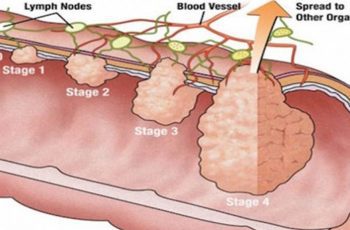Mold is a very common problem in almost every household. It can be a huge issue concerning the aesthetic look of your home but also and more importantly, mold presents a serious threat to the condition of your health.
You can find mold many places inside your home; from the basement, sink, shower curtains, corners and more.
Research states that even some unexpected things such as Christmas trees have been known to produce mold.
There are 1,000 different types of mold. Concerning the effects they provoke, experts have classified them in several highly important groups:
Toxigenic Molds:
These molds can produce mycotoxins that lead to extremely difficult health effects, such as immunosuppression or even cancer. People absorb toxic chemicals almost instantly as they are inhaled, ingested or even touched.
Allergenic Molds:
These molds belong to the least threatening ones. Children are more exposed to these molds than adults. They can make asthma symptoms even worse and cause problems to people who have inherited a predisposition to have problems with allergies to certain molds.
Pathogenic Molds:
Pathogenic molds can cause very serious problems to people with a poor immune system. People who are weak to these types of molds are prone to develop a very serious response that is similar to, for instance, bacterial pneumonia.
Here are 5 extremely common molds that grow indoors:
· Cladosporium: This very common outdoor mold grows on damp materials such as wood. It causes fever and symptoms similar to asthma.
· Stachybotrys: This “black mold” is very toxic. It produces mycotoxins and causes various serious health issues like breathing difficulties or even lung bleedings. You can find it in paper, wood, but not so much on tiles, concrete or linoleum.
· Aspergillus: You can find this mold in a house dust, usually in extremely warm and damp climates. These molds produce mycotoxins which can result in serious lung infections.
· Alternaria: These molds live in the upper respiratory area, as well as nose and mouth and result in various allergic responses.
· Penicillium: These molds provoke asthma and various allergies. You can find them almost everywhere in your home – carpets, wallpapers, old fabrics, fiberglass duct insulation. Some species, such as the antibiotic penicillin can produce mycotoxins.
Mold illness can be explained as a palette of different health problems caused by certain molds.
“Although a mold allergy is the most common problem caused by exposure to mold, mold can cause illness without an allergic reaction. Mold can also cause infections or irritant and toxic reactions. Infections caused by mold can lead to a variety of problems from flu-like symptoms to skin infections and even pneumonia. “
Ritchie Shoemaker, explained the mold toxicity known as a Chronic Inflammatory Response Syndrome (CIRS) in his book Life in the Era of Dangerous Buildings as:
“an acute and chronic, systemic inflammatory response acquired following exposure to the interior environment of a water-damaged building with resident toxigenic organisms, including, but not limited to fungi, bacteria, actinomycetes, and Mycobacterium as well as inflammagens…”
Here are very common symptoms of mold causing you to be sick:
· Fatigue or weakness
· Digestive problems like nausea, loss of appetite, diarrhea, or pain in your abdominal areas
· Sensitivity to light, or red eyes. Check this out more symptoms of eye issues
· Focus problems, headaches, trouble remembering things, fog of the brain
· Tremor and vertigo
· Night sweats or irregular temperature
· Being extremely thirsty for liquids
· Sensations of numbness, or tingling
· Unexpected or unexplained joint pain, nerve pain, or muscle cramps
· Shortness of breath, sinus, or asthma issues that suddenly flare up
For additional tips, follow this video.

